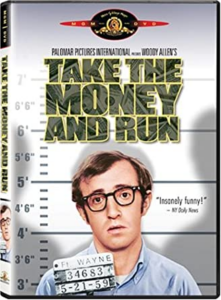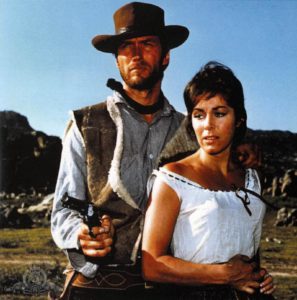Movie genres or film genres group different movies based on setting, characters, plot, story, tone, styles, syntax, templates, paradigms, motifs, rules, and themes. Sub-genres is a smaller category that may combine different elements from multiple genres. If you want to create your own screenplay, here are 70+ screenplay examples from top Hollywood films.
To see the effect genres have on viewers, watch how Zootopia has been edited in a way to cover 7 different genres:
The word “genre” comes from French, where it means “type” or “kind.” We define a particular genre as a type or kind of category of movie or film that has its own recognizable conventions and character types such as:
- Setting or Period: When and where the movie takes place including certain stereotypes, props, or icons. Ex:
- Horror: Dark places and unexplained things like forests, graveyards, castles, abandoned structures or buildings, locked doors to remove rooms, blood, gore, or killing instruments.
- Sci-Fi: Outer space or futuristic items like spaceships or laser guns
- Sports: Sports arenas, teams, athletes, and sports equipment
- War: Different vehicles such as tanks, planes, or realistic battlefields
- Westerns: Cattle, stage coaches, saloons, ten-gallon hats, the frontier, or revolvers
- Characters:
- Comedy: nerds, jocks, token minorities, or friends
- Crime: Detectives, gangsters, criminals, fugitives, or inmates
- Horror: Zombies, serial killers, or ghosts
- Sci-Fi: Aliens, monsters, or superheroes
- Sports: The underdog
- Westerns: Cowboys, outlaws, the Sheriff
- Subject Matter: Storyline, plots, or themes similar to other movies in the genre
- Action: Chase sequences, extended fight scenes, guns, races against time
- Comedy: Slapstick humor, witty dialogue, rites of passage, gross-out humor, fish-out-of-water, cross-dressing, mistaken identity
- Crime: whodunnits, capers, rival gangs, robberies
- Horror: urban legends, ghost stories, the “final girl” survivor, paranormal and occult, survival-horror, ‘found footage’
- Melodramas: a self-sacrificial maternal figure
- Musicals: singing and dancing
- Romance: different stages of “falling in love” with a subsequent break-up and reconciliation, true love, fairy tales, forbidden love
- Sci-Fi: interstellar travel, “space operas”, doomsday, and apocalyptic tales
- Filming Techniques and Formats:
- Camera Angles: low / high angles
- Shooting style: hand-held, POV, stationary, or “found footage”
- Lighting: High-key or low/dark lighting
- Editing style: Length of edit, use of jump cuts
- Costuming: use of blood, masks, special effects
- Color Schemes
- Makeup
- Music and Audio: Using sound to enhance or emphasize different characteristics, plots, or create a mood (danger, laughter, adventure, feature, excitement, sensual, etc.)
Genres provide a simple way for movie-makers to produce within a framework and provide an easily marketable product, but may become cliche-ridden and over-imitated. If a traditional genre has been reinterpreted, it may be called revisionist.
Genres typically go through 5 distinct stages throughout cinematic history:
- Primitive: Earliest and most pure genre form where iconography, themes, and patterns develop
- Classical or Traditional: Growth, popularity, and solidification of genre with clear characteristics and prototypes
- Revisionist: Reinterpretation or questioning of the original genre with greater complexity of themes while keeping many iconographic and characteristic elements
- Parodic: Mocking or spoofing the genre through over-exaggeration of characters or themes
- Extended, Mixed, Hybrids: Blending various genre elements together
(Quick note: When talking about genre, we are referring to movie genres within the realm of narrative movies. Thus, documentary and experimental movies do not constitute genres unto themselves, rather, they are almost entirely different styles of moviemaking. In addition, animated movies are not a genre, but just a different way to make a movie in any genre.)
Let’s now jump into the major movie genres, and explain what makes them distinctive.
Action:
Action movies involve one or more protagonists overcoming non-stop dangerous challenges and include:
- Physical feats
- Extended fights
- Extensive stunts
- Frantic car chases
- Rescues
- Battles
- Escapes
- Catastrophic disasters – floods, explosions, fires, etc.
- Adventure
- 2 Dimensional ‘good’ heroes / heroines battling it out with ‘bad’ guys
Story and character development are generally secondary. These movies move quickly and have a clear distinction between good and evil. Also, action movies almost always involve a “ticking clock” element to the plot, where the protagonist has to do something (disarm a bomb, save a VIP, etc.) before time runs out.
Audience Expectations:
- Clear division of good and evil
- Lots of fighting and set pieces
Types of Action Movies:
- Action- Adventure: Movies in this sub-genre are usually described by a journey with a protagonist in pursuit or search of something in an exotic location. Steven Spielberg’s Indiana Jones franchise is a very good example for this sub-genre. In the movie Indiana Jones and the Raiders of the Lost Ark, Indiana Jones, an archaeologist was in search of religious artifacts. Other examples include pirate movies, serialized movies, treasure hunts, searches or expeditions for lost continents, jungle / desert epics, gold, hidden maps, traps, and exploration to the unknown.
- Superhero movies: This sub-genre is defined by the heroes having supernatural abilities, and more importantly, using their superpowers for selfless purposes. They battle with villains with similar super-powers. They are usually, but not necessarily, derived from superhero comic books. The Marvel and DC franchises (Superman, Iron man, etc.) are superhero movies derived from comics but The Incredibles is not from a comic.
- Martial arts movies: This sub-genre of movies is also called “Wu xia pian”, meaning ‘movies of chivalrous combat’ in Chinese. These movies are defined by values such as duty, brotherhood and honor. A classic example of this movie is Enter the Dragon– starring Bruce Lee, and some Jackie Chan movies like Rumble in the Bronx.
- Heroic Bloodshed: This sub-genre focuses on values such as brotherhood, honor, redemption, duty, and protecting the vulnerable. Originally this comes from Hong Kong, but it has been spread internationally since then. An example of this sub-genre would be The Killer.
- Military Action: Here the sub-genre focuses on the exploits of the military as entertaining versus tragic. Examples of this include movies such as Transformers or the G.I. Joe series.
- Spy movies: A trademark of this sub-genre is that a spy usually finds his/herself on a secret mission, typically in an exotic location, and very often using a variety of sophisticated gadgets and equipment to complete their mission. The James Bond series is a good example of this sub-genre.
- Disaster movies: This sub-genre of movie is characterized by a large amount of destruction: often from natural-occurring events such as earthquakes, tornadoes, asteroids hitting the earth, etc. The main goal of the protagonist in a disaster movie is to survive. A present-day example is 2012– starring John Kusack.
- Video game movies: These movies’ screenplays have been adapted from well- known video games. They can fall under any genre depending on plot and storyline. For example, the Prince of Persia series.
Comedy:
One of the oldest and most popular genres in movie history, comedy emphasizes humor, designed to make people laugh by exaggerating the situation, relationships, characters, action, or language. Most comedies have happy endings (the exception being Dark comedies).
Audience Expectations:
- Light-hearted and fun
- Romance stories
- Ensemble casts
Types of Comedies:
- Slapstick comedy: The first thing that people connect with this sub-genre of comedy is Charlie Chaplin- one of the pioneers in the silent era. Slapstick goes way back to stage plays and vaudeville, and grew over the years. These movies need little or no conversation and are still popular, with modern-day movies like Jim Carrey’s The Mask and Liar Liar.
- Romantic comedy: This sub-genre of movies looks at difficulties arising from a person searching for a new relationship, in humorous situations. Humor in these movies is usually verbal or situation-based. This form of comedy evolved from screwball comedies from the 1930s and 1940s. Some well-known examples of this sub-genre are The Philadelphia Story– starring Katharine Hepburn and How to Lose a Guy in 10 days– starring Matthew McConaughey and Kate Hudson.
- Action Comedy: This sub-genre blends action sequences with comic consequences. Some examples are Charlie’s Angels (2000), starring Drew Barrymore and many of Jackie Chan’s movies including The Spy Next Door (2010).
- Dark Comedy: Also called black comedy, this sub-genre makes fun of serious themes such as war and death. It became popular in the 1940’s and 1950’s after the World War 2. This genre is believed to have helped people cope with serious issues. Stanley Kubrick’s Dr Strangelove is one of the best movies made in this sub-genre.
- Buddy Comedy: This sub-genre is defined by 2 individuals who go through a series of humorous events. Examples of this sub-genre would be Rush Hour or Harold & Kumar Go to White Castle
- Road Comedy: These movies are defined by humorous situations as the characters go through a journey and meet various other characters along the road. Some examples of this sub-genre are: Dumb and Dumber and Planes, Trains & Automobiles
- Parody: This sub-genre of movies makes fun or mocks an entire genre of work. A parody mocks a specific piece of entertainment. Filmmakers of this sub-genre assume that audiences understand clichés and use that knowledge to turn conventions on their heads. These types of movies became popular in the 1970s and 1980s. Who framed Roger Rabbit? is an example of this sub-genre.
- Spoof: This sub-genre is broader than parody and mocks other genres and typically targets specific pieces of art, entertainment, or collections of movies. Example of movies include The Naked Gun and Not Another Teen Movie.
- Satire: Satires are even broader than spoofs and mocks human nature, vices, institutions, and other concepts that might not be in connection to a specific piece of art. Examples include Idiocracy and In The Loop.
- Sitcom: This sub-genre is defined by a group of people that go through various humorous situations and misunderstandings. Examples of this include Seinfeld and It’s Always Sunny in Philadelphia.
- Sketch Comedy: This sub-genre is defined by a collection of different situations and can include the use of spoof, satire, parody, and many other types of sub-genres. Examples here include Chappelle’s Show and The Whitest Kids U’ Know.
- Mockumentary: Mockumentaries use the documentary format for satires, spoofs, and parodies. Instead of mocking the format, the format is used to mock. Examples of this include The Office and This Spinal Tap.
- Prank: This sub-genre uses a mix of real-life participants who go through a planned event without them knowing. Typically the events are well orchestrated and force foolishness or error from the participant to get a humorous reaction from the audience. Examples include Nathan For You and Borat.
- Screwball: This sub-genre is a style of comedy popular in the 1930s and 40s combining farce, slapstick, and witty dialogue and typically involved comedies of remarriage. Examples include My Man Godfrey and The Awful Truth.
Here is an an example of Sketch Comedy:
Crime:
This plot of movies in this genre is centered on a particular crime or string of criminal activities. Criminal activities in these movies are almost always encouraged. Criminals – robbers, gangsters, murderers and serial killers populate this genre, along with cops, detectives and other law enforcement officials.
Audience Expectations:
- Gunplay, violence, and ruthless tactics
- Courtroom scenes
- Law is seen as either good or bad depending on hero / heroine
- Hays Code spelled out what is acceptable / unacceptable in movies, often showing the bad guys getting punished for their actions
Types of Crime Films:
- Gangster movies: These movies dive into the world of organized crime. They glorify the activities gangsters engage themselves in. This sub-genre of movies has been popular since the concept of cinema. Goodfellas, The Godfather trilogy, and Scarface are quintessential examples of the gangster movie.
- Prison movies: This sub-genre of movies delves into the harsh living conditions of prisoners. Some movies may also show hardships faced by ex-convicts adjusting to life outside of prison. The audience is directed to sympathize with the inmate who generally was wrongly convicted. Shawshank Redemption and The Green Mile are examples of this sub-genre.
- Crime-comedy movies: This genre-hybrid sees criminals carry out criminal activities, but the events that transpire are presented humorously. Frequently in these movies, the criminals get away with the loot! But the brains behind the criminal act normally end up in some trouble that they had not anticipated. A Fish called Wanda is an example of this sub-genre.
- Detective / Hardboiled movies: Commonly called “Whodunnits”, this sub-genre of movies follow detectives and the methodology used to solve crime. Murder on the Orient Express (1974), based on the book written by Agatha Christie, is a good example of this sub-genre.
- Caper: This sub-genre focuses on a group of criminals who set out on a heist or job. Typically these movies are less serious and often humorous versus other crime genres. Examples include Ocean’s Eleven or Baby Driver.
- Heist: Heists are defined by criminals who try to steal something valuable and typically are more serious versus a Caper. Examples include Heat and The Score.
- Cop (Police): This sub-genre follows a street cop (not a detective) who has to deal with crime and criminals. Examples include End of Watch and Beverly Hills Cop.
- Courtroom: This genre requires that the majority of the story supports events that are connected to a court case. Examples of this include A Time to Kill and A Few Good Men.
Horror:
This very popular genre of movies is characterized by the ability to shock or scare the viewer with gruesome or scary visuals for entertainment purposes. The main characteristic of horror is scary visuals appear when the audience least expects it. Sound effects add to the fear factor in these movies. Stanley Kubrick’s The Shining is a very famous movie in this genre.
Audience Expectations:
- Supernatural beings such as haunted houses, ghosts, vampires, etc.
Types of Horror Films:
- Natural Horror: This sub-genre of movies deals with animals, insects, and other element of nature who turn into cold-blooded killers. The reason behind this is often human intervention, such as scientific testing gone wrong. Sometimes, fury and revenge can cause them become like this. Cujo and Alfred Hitchcock’s The Birds are examples of this sub-genre.
- Ghost: This sub-genre includes spirits or souls of a deceased person or creator to add elements of horror. Examples include The Others and The Frighteners.
- Monster: The monster sub-genre uses supernatural creatures to introduce elements of horror as the antagonist. Examples include The Babadook and Pumpkinhead.
- Werewolf: A werewolf movie uses humans to transform into wolf-like creatures who might shape-shift at will or shape-shift by the full moon. Examples include An American Werewolf in America and The Wolfman.
- Vampire: Vampire movies incorporate horror using undead, immortal creatures that drink blood. Sometimes the vampires are the protagonist to build sympathy versus terror. Examples include Near Dark and Nosferatu.
- Occult: Occult movies use paranormal themes and spiritual realities that go beyond scientific observation to add horror elements. Examples include Rosemary’s Baby and Hereditary
- Slasher: Slasher movies have a set of antagonists that stalk and murder groups of people using blades or sharp weapons. Examples include Halloween and The Texas Chainsaw Massacre
- Splatter: This sub-genre typically involves a lot of gore and can often include torture. Examples of this sub-genre include Day of the Dead and Jigoku.
- Found Footage: The Found Footage sub-genre uses a format where the footage appears to be an informal recording of events with realistic horrific events. Examples include The Blair Witch Project and Paranormal Activity.
- Zombie: Zombie movies typically involve a group of characters trying to survive a world that has been taken over by large amounts of zombies. The cause of the zombie event is typically infectious diseases or experimental drugs. Examples include Night of the Living Dead and 28 Days Later.
- Teen Terror: Teen Terror typically uses a group of teenagers who are going up some horrific force that they must overcome. Examples include Final Destination and I Know What You Did Last Summer.
- Satanic: This sub-genre uses the Devil as a concept of character and usually includes other themes or characters such as the Antichrist, demonic possession, exorcism, and witchcraft. Examples include Ready or Not and The Ninth Gate.
Thrillers:
At their core, thrillers seek to create suspense and elicit excitement out of the audience. Thrillers seek to induce anxiety in the viewer to keep them on the edge of their seat. Ridley Scott, Alfred Hitchcock and Martin Scorcese are some of the famous directors of this genre. After World War II, these movies became dark. Some iconic examples are: Silence of the Lambs– starring Anthony Hopkins and Alfred Hitchcock’s Vertigo.
Audience Expectations:
- Heart pumping action that triggers suspense, surprise, anticipation, and anxiety within the audience
- Psychological Thrillers: These movies are dark thrillers that are centered on the psyche of people. Generally, these characters have mental health disorders and usually develop these as a result of any form of abuse as a child. A very famous example is Alfred Hitchcock’s Psycho – in this movie, Norman Bates is the owner of a motel, who suffers from dissociative identity disorder- it means that he assumes 2 different identities (the other being his mother “Norma”). He was abused as a child, and as a result, developed this illness, and goes on a killing spree when he fell in love with the female lead of the movie.
- Conspiracy Thrillers: This sub-genre is centered on protagonists investigating issues which lead them to a conspiracy they need to solve. Classic examples are: The Da Vinci Code– starring Tom Hanks, based on the book of the same name by Dan Brown. A branch of this sub-genre is the Legal Thriller sub-genre. An example of a legal thriller is Primal Fear.
- Crime Thrillers: This is a blend of the traditional elements of the “Crime” and “Thriller” genres. These movies focus on criminal activity like murders and robberies and deal with serial killers too. They also work with action to bring in suspense. An example of this is No Country for Old Men.
- Supernatural Thrillers: A combination of Sci-Fi and Fantasy, these movies appeal to the audience because they are very much out of the ordinary. Supernatural thrillers draw on elements of the paranormal, such as ghost stories and vampires. M. Night Shyamalan’s movies such as the Sixth Sense are classic examples of this sub-genre of movies.
- Mystery: Mysteries are often similar to the crime sub-genre, but do not always use law enforcement as main characters. These are typically defined by the plot and the character’s relationship with the motivations and reality behind the occurring events. Examples include Knives Out and The Girl with the Dragon Tattoo
- Techno: This sub-genre takes place often using sophisticated technology as a differentiating format. Examples of movies include The Matrix and Ex Machina.
- Film Noir: Film Noir is sometimes seen as more of a style versus a genre, however crime typically has a strong presence in the movies. Typically the theme circles around some sort of imbalance in a character that leads to aggression, self-hatred, or sociopath.
Fantasy:
Set in a fictional world, this genre of movies is related to fairy tales and supernatural beings like elves, wizards, and gnomes. This genre commonly incorporates magic and magical beings. These movies are most popular among teens and kids. Some famous examples are: The Hobbit series and Spirited Away.
Audience Expectations:
- Mysticism / Magic / Sorcery
- Royalty
- Humanoid creatures like: Elves, Orcs, Hobbits
Types of Fantasy:
- Mythological Fantasy: These movies are set in a world ruled by Greek and Roman gods, with heroes from Greek/Roman mythology. This sub-genre of movies dropped in terms of popularity after the 1970s. A modern day example is Percy Jackson: The Lightning Thief.
- Fairy Tales: These movies are nothing but fairy tales made into screenplays for Hollywood cinema. In the recent past, some of these movies have incorporated a dark plot and subplot. Some famous examples are: Beauty and the Beast and Maleficent.
- Urban fantasy: This has fantasy elements incorporated in an urban setting and is quite a popular sub-genre. This can be in a real or fictional setting, but the story must focus on what happens in an urban environment. Some examples of this sub-genre are Buffy the Vampire Slayer and Ghostbusters.
- Contemporary Fantasy: This subgenre introduces fantasy elements, but in the current time period. Examples include the Harry Potter Franchise and The Chronicles of Narnia
- Dark Fantasy: Dark Fantasy is a sub-genre where elements of fantasy are added into a hostile world. Examples include Solomon Kane and Pan’s Labyrinth.
- High Fantasy: This sub-genre is also referred to as epic fantasy, adds elements of fantasy to a fictional setting typically including mythical creatures, battles, and romance. Examples include The Lord of the Rings Trilogy and Game of Thrones.
- Myth: This sub-genre is defined as a story that typically plays a fundamental role in how society developed – such as the origin story for humanity / existence. Characters may include gods, demigods, and supernatural humans and stories are typically using the The Hero’s Journey theory by Joseph Campbell. Examples include The Monkey King and Hercules.
- Sword and Sorcery Movies: This genre combines elements from other epic and heroic fantasies with a focus on swords and magic. Examples include Conan and the Barbarian and Masters of the Universe.
Science-Fiction:
Also known as Sci-Fi, this genre is very popular and plays well to the ‘Suspension of Disbelief .’ A movie can be categorized into this genre if the plot looks into one or more of these topics: Speculative fiction, technology, space travel and futuristic ideologies.
Science fiction movies have been around since the dawn of the movie industry, with George Méliès A Trip to the Moon being the first true global blockbuster in 1902. With the advent of new computer technology, special effects became of utmost priority in these movies. Steven Spielberg, Christopher Nolan and James Cameron are famous directors of this genre. Some famous examples of movies are ET: The Extra Terrestrial and the Star Wars franchise.
Audience Expectations:
- Heroes
- Aliens
- Far away planets
- Impossible quests
- Fantastic places
- Futuristic technology
- Improbable settings
- Unknown forces
- Unknowable Forces
- Extraordinary monsters
- Mad scientists
- Nuclear war
Types of Science Fiction:
- Space travel: This sub-genre of movies deals with adventures, battles and drama that occurs in outer space. It goes back to the silent era with George Méliès’ movie “Le voyage dans la Lune (English: A trip to the Moon) in 1902. A modern-day example of a space travel movie is The Martian (2015
). - Time travel: A very intriguing aspect of Sci-Fi, this can stand by itself as a separate genre. But nowadays, it is mostly a tool that helps in building plots and sub-plots for movies. As the name suggests, these movies can take you back or forward in time. A good example of a time travel movie is X-Men: Days of Future Past.
- Tech Noir: This sub-genre combines the practices of Film Noir (dark movies) and Sci-Fi. Film Noir is a technique of movie making that is defined by pessimism and a cynical approach to life. Ridley Scott’s Blade Runner is a good example of a Tech Noir movie.
- Robot/Monster movies: Robot movies can be put under many sub-genres, but they are categorized, by and large, into Sci-Fi. Ultimately, in the end of each movie in this sub-genre, there is always a show-down between man and robot or man and monster. A good example is Jurassic Park.
- Sci-Fi Adventure: This sub-genre deals with exciting stories about creatures like aliens, robots and other creatures related to this genre. An example is Wall-E.
- Military Sci-Fi: This sub-genre is centered on military-related fights but in a futuristic setting. An example is Edge of Tomorrow.
- Apocalyptic: This sub-genre is based around the effects and struggle from an apocalyptic event. Dystopian stories will typically have some sort of large war or apocalyptic event as well as a centralized government that was formed afterwards. Apocalyptic movies typically do not feature a centralized government. Examples include: 28 Days Later and 12 Monkeys.
- Utopian: Utopian movies are defined by the creator’s view of an ideal world that is without struggle with peace, harmony, and a world without homelessness or hunger being key themes. Typically utopian movies tend to be satire since stories often involve conflict and utopian societies are seen as an unrealistic ideal. Examples include Gattaca and Tomorrowland.
- Dystopian: Dystopian stories feature a world that typically have an oppressive government or religion that dehumanizes its citizens. Examples include Equilibrium and Children of Men.
- Cyberpunk: This sub-genre is defined by a mixture of a high tech world combined with high crime. Examples include Blade Runner and Elysium.
- Steampunk: Steampunk is inspired by technology created during the 19th century and the industrial revolution and may be set in some alternate universe or revision of the 1800s. Examples include Howl’s Moving Castle and Mortal Engines.
- Space Opera: This sub-genre mixes space warfare, adventure, and romance. The genre has no connection to music, it is more similar to “soap operas.” Examples here include Star Wars and The Fifth Element.
- Contemporary: This story is set in the actual time period of its conception and adds some sort of new technology or scientific concept to add to the story’s main source of conflict. Examples include: Ex Machina and Arrival.
Drama:
A very broad genre, this genre of movies can be clubbed with other genres as well. Also, drama movies are the cheapest to produce, according to a study done by stephenfollows.com. It was argued that drama cannot exist as a genre, but it exists as a separate genre nowadays.
The concept of drama movies changed considerably in the 1970s. Some drama movies can also trigger an emotional response in the audience. An example of a classic drama movie is A Streetcar Named Desire.
Audience Expectations:
- Realistic characters, settings, stories, and life situations with strong character development driven by a serious plot or dealing with struggles of everyday life
- Typically no focus on special effects, comedy, or actions.
- Settings include a home, office, or a group of characters forced to interact everyday
Types of Dramas:
- Sports Drama: This sub-genre of movies portrays the conflicts and struggles faced by athlete(s) in their field. The story can be fictional or non-fictional. The Wrestler is fictional while Remember the Titans was based on a true story. There could be a possibility of a romantic sub-plot and/or hurdles faced by them politically or socially. Examples of sports dramas are the Rocky Series and Martin Scorcese’s Raging Bull.
- Political Drama: This sub-genre focuses on what happens in a political setting, ranging from local governments to national government levels. A good example of this is Bridge of Spies.
- Teen Dramas: A very simple sub-genre, Teen Dramas focus on lives of teenagers and adolescents and their struggles. A relatable example of this is The Perks of being a Wallflower, based on the book of the same name written by Stephen Chebolowsky.
- Medical Dramas: This sub-genre of movies deals with the routine of doctors and nurses in a hospital. It can also focus on the life of a particular doctor. Awakenings (1990) is a quintessential example of this particular subgenre.
- Family Dramas: This sub-genre of movies focuses on issues surrounding families and their inner workings. A classic family drama is Kramer vs. Kramer (1980).
- Melodrama: Melodrama are defined by prioritizing dramatic rhetoric and plot versus character. The events are designed to cause an intense emotional response within the audience with situations used to illustrate a larger moral thesis. Examples include Beaches and The Fault in Our Stars.
- Philosophical: This sub-genre is defined by the exploration of the human condition and is derived from questions of existence and life. Examples include The Razor’s Edge and I Heart Huckabees.
- Legal: The legal sub-genre is defined by lawyers, judges, and legal complications involving the criminal justice system. The focus is typically on characters at a law firm or judges chambers rather than a specific crime. Examples include The Practice and The Firm.
- Anthropological: This sub-genre focus on the human behavior and society at large while focusing on a specific culture or society. Examples include City of God and Do the Right Thing.
- Docudrama: A docudrama takes real-life events and recreates in them in a dramatic way. They are typically held to a higher standard of accuracy than a historical account or memoir. Example include 127 Hours and Captain Phillips.
Romance:
This genre of movies deals with an emotional relationship between two or more characters. The usual pattern of these movies is: 2 people fall in love, break up or get back together in the end; or have to face backlash from society or family. Ghost (1990) is a good example of the Romance genre.
Audience Expectations:
- Two characters who fall in love, but face conflict
Types of Romance Movies:
- Historical Romance: These are also called Epic Romances, Period Romances, and Romantic Dramas. This sub-genre goes way back to English literature, tracing themes from authors like Jane Austen. A characteristic of this sub-genre is that they are set in a particular time period. Examples are Gone with the Wind and Doctor Zhivago. Romantic dramas are slightly more complex as they delve deep into emotions- deals with issues like separation and/or death. Examples are Casablanca and James Cameron’s Titanic.
- Chick Flicks: Typically used as a derogatory term for any romance movie that seems to be aimed at women that became very popular in the 1990’s. It is a blend of comedy, romance and drama. These movies generally make the audience cry. Dirty Dancing– starring Patrick Swayze, and The Notebook– starring Ryan Gosling and Rachel McAdams are good examples.
- Supernatural Romance: A mix of Sci-Fi or Fantasy and Romance, these movies became popular in the early 2000’s with new young adult novels that came out. These movies deal with romance with a dark plot between supernatural creatures. An example is the Twilight series.
- Romance Drama: This sub-genre is defined by a conflict that has been generated from a romance. This is differentiated from a Romance Thriller due to the source of the drama and the motivations and intentions of the characters. Examples include Revolutionary Road and Blue Valentine.
- Romance Thriller: This sub-genre has a suspenseful story based around a romantic relationship. Some examples include The Saint and Unfaithful.
Western:
Western is a unique genre of movie that originated in America. One would associate this genre with. A famous example of this genre is Butch Cassidy and the Sundance Kid. Some movies are also set in modern times, and they are called Modern Western movies and an example is Brokeback Mountain. The Western Genre, as such, can be mixed into other genres, and these type of movies are Hybrid Western movies.
Audience Expectations:
- Cowboys
- Horse-riding
- Military expansion
- Interaction with Native American tribes
- Gun fights
- Technology innovation during the Industrial Revolution
Types of Westerns:
- Spaghetti Western: This sub-genre of movies was named because they were made in Italy or had Italian moviemakers to produce it. The main difference between Spaghetti Western and Traditional Western is the tone- the lead character (the anti-hero) has a conflict with the opponent (more like a personal vendetta) instead of fighting for a noble cause. A good example of a Spaghetti Western movie is Django (1966). People also come across the term “Euro-western”, but it is independent of the Spaghetti Western movement. The Euro-western movement comprises all Western movies from places like Germany and Yugoslavia.
- Revisionist Western: This sub-genre questioned the fabled vision of the Old West. Revisionist Western attempted to make realistic presentations of the Old West or to subvert the conventions of classical western. Director John Ford was most famous for bringing about this sub-genre of movies- starting with The Searchers (1956).
- Musical Western: These movies are musicals in a western setting. Country music is the key feature of this sub-genre. An example is Cowboy Serenade.
- Epic Western: The epic western emphasizes the western genre elements, but on a grand scale using large scale real-life events to frame the story.
- Empire Western: This sub-genre follows a character or group of characters as they build a large scale business based on land and natural resources such as railroads or settlements.
- Marshal Western: The marshal western follows a lawman as they try to apprehend a group of gangsters or criminals.
- Outlaw Western: This sub-genre follows a criminal or group of criminals as they try to evade the law.
- Revenge Western: This sub-genre has elements of the western genre, but with the protagonist focusing on revenge.
Historical:
This genre of movies focuses on historical event(s) and people involved or related to that event. In this genre, a lot of emphasis is placed on reproducing content according to historical facts. An example is Gandhi, starring Ben Kingsley.
Types of Historical Movies:
- Biopics: A popular sub-genre, these movies are based on the life or lives of famous personalities. The difference between docudramas and biopics is that the emphasis is more on facts rather than drama. A famous modern-day example of this is Bohemian Rhapsody– based on Freddie Mercury, the lead singer in the band “Queen”.
- War: A separate genre, these movies deal with warfare and situations related to the armed forces. This may include POW tales, stories of military operations, training, horror and heartbreak, and actual combat fighting on land, sea or air. Some famous examples are Saving Private Ryan and Schindler’s list.
- Historical Event: This sub-genre focuses on a dramatic version of a popular historial event. Examples include Apollo 13 and Lincoln.
- Biography: A biography details the life told by someone not the subject. Typically this movie will span a large portion of a subject’s life, but may just focus on a specific time periods where the person has had the greatest effect on history. Examples include A Beautiful Mind and Catch Me If You Can.
- Historical Fiction: Historical fiction takes place during a specific time period with a more dramatic twist for entertainment. These movies typically use real-life events and people, but are generally not incredibly accurate. Examples include Titanic and Spartacus.
- Period Piece: Period pieces and historical fiction are very similar, but period pieces don’t usually use real-life characters or events. These movies are usually defined by accurately portraying the time period versus specific people. Examples include The Age of Innocence and Barry Lyndon.
- Alternate History: This sub-genre is defined by rewriting famous and important historical events to create new outcomes. Examples include Inglourious Basterds and The Man in the High Castle.
- Biblical Movies: Biblical movies typically focus on events described in the bible. Examples include Ben Hur and The Passion of the Christ.
- Historical Epic: Typically takes a historical or imagined event, myth, legend, or heroic figure and adds an extravagant setting with decorative costumes, grandeur and spectacle with high production values and musical scores.
Musicals:
The main feature of these movies is that singing and dancing is used within the space of the narrative. These movies became popular after stage plays, which incorporated the same mediums of entertainment. They became popular after the silent era. Some greats in this genre of movies are Fred Astaire, Gene Kelly and Shirley Temple. Some movies worth noting are Sound of Music (1965), A Star is Born (2018).
Animation:
Animation is actually a format, but is sometimes incorrectly categorized as a genre.
The Animation format is characterized by making inanimate objects seem alive and they are usually computer-generated imagery (CGI). This can be done in several ways, and this genre can be manipulated to be included in other genres and sub-genres. The best example is the Oscar winning movie Toy Story 4. There’s a full cast and crew for these kind of movies including Director, Production Designer, etc.
Types of Animated Films:
- Traditional: Traditional animation is typically hand-drawn or painted images that assemble to animate a cartoon. Examples include Robin Hood and the Flight of Dragons.
- Stop Motion: Stop motion takes real objects and adjusts them frame by frame to convey emotion and movement. This is a style of photography that can branch out into claymation and puppetry. Examples include: The Nightmare Before Christmas and The Fantastic Mr. Fox.
- Puppetry: This format uses puppets including hands, sticks, shadows, marionettes, and ventriloquists to tell a story. Examples include Team America: World Police.
- Claymation: This format is a form of stop motion animation except the subjects are made out of clay. Examples include Wallace and Gromit and Chicken Run.
- Cutout: This format uses cut out shapes placed on top of one another to make figures and settings. Examples include South Park.
- Computer Generated Imagery: This format is the most common form where software is used to animate cartoons. Examples include Wall-E and Inside Out.
- Live-Action: Live action combines animation with real life subjects. Examples include Space Jam and Who Framed Roger Rabbit.
Congratulations, you made it to the end of the list! You can learn more about movies and how you can improve your skills by applying to the Nashville Film Institute here.













